For several generations, AMD has been striving to challenge Nvidia in the high-end graphics card market. With the AMD Radeon RX 9070 XT, however, AMD has shifted its focus away from competing directly with Nvidia's ultra-high-end RTX 5090. Instead, AMD aims to deliver the best graphics card for the majority of gamers, a goal it has impressively achieved. Priced at $599, the Radeon RX 9070 XT delivers performance that rivals the $749 GeForce RTX 5070 Ti, making it a standout choice in today's market. AMD enhances the value proposition with FSR 4, introducing AI upscaling to its graphics cards for the first time. This feature makes the RX 9070 XT an excellent choice for 4K gaming, especially for those who don't want to spend nearly $2,000 on the RTX 5090.
Purchasing Guide ----------------
The AMD Radeon RX 9070 XT will be available starting March 6, with a starting price of $599. Be aware that prices may vary, as third-party cards could be priced higher. Aim to purchase one for under $699 to get the best value.
AMD Radeon RX 9070 XT – Photos
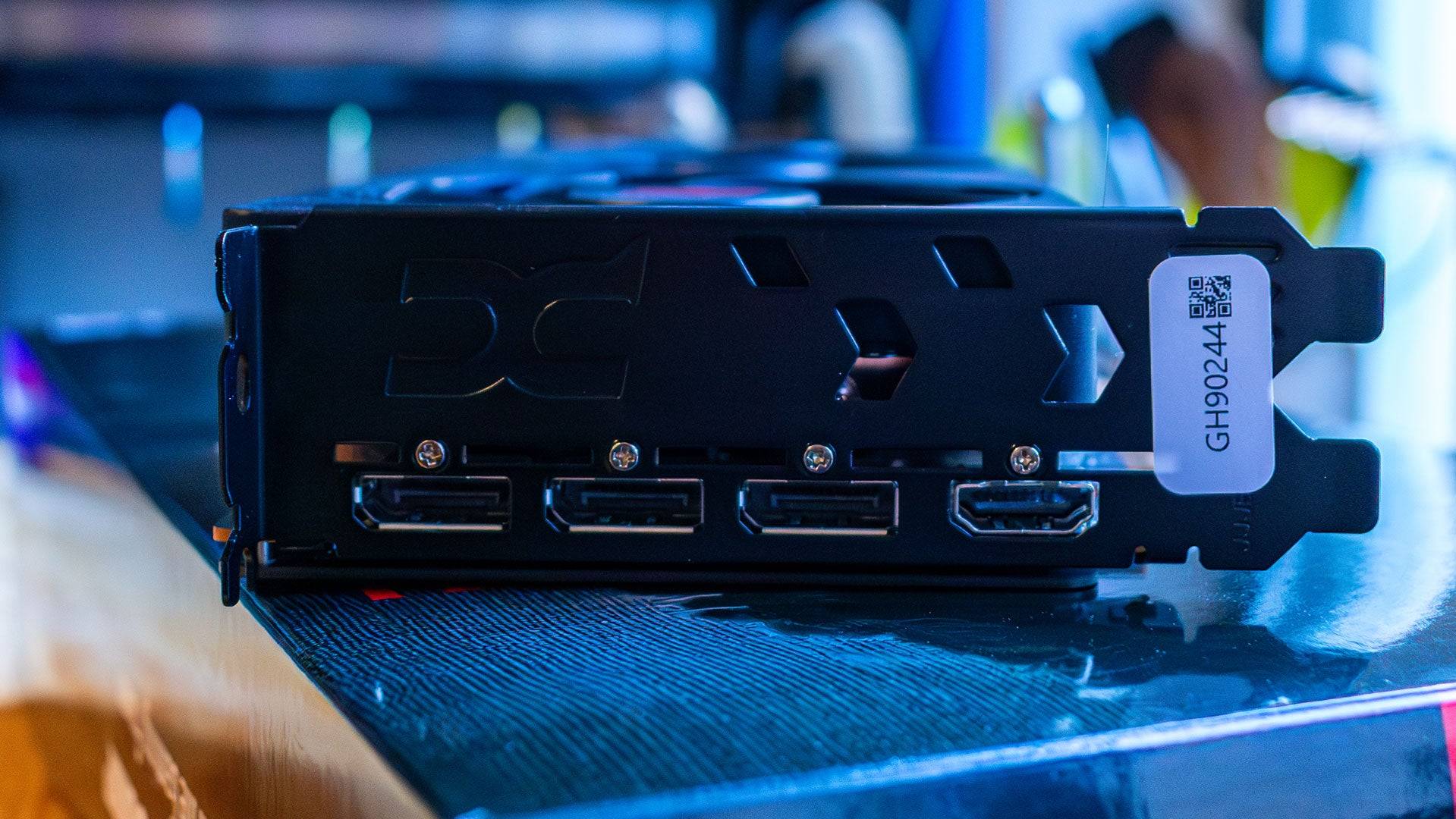
 4 Images
4 Images
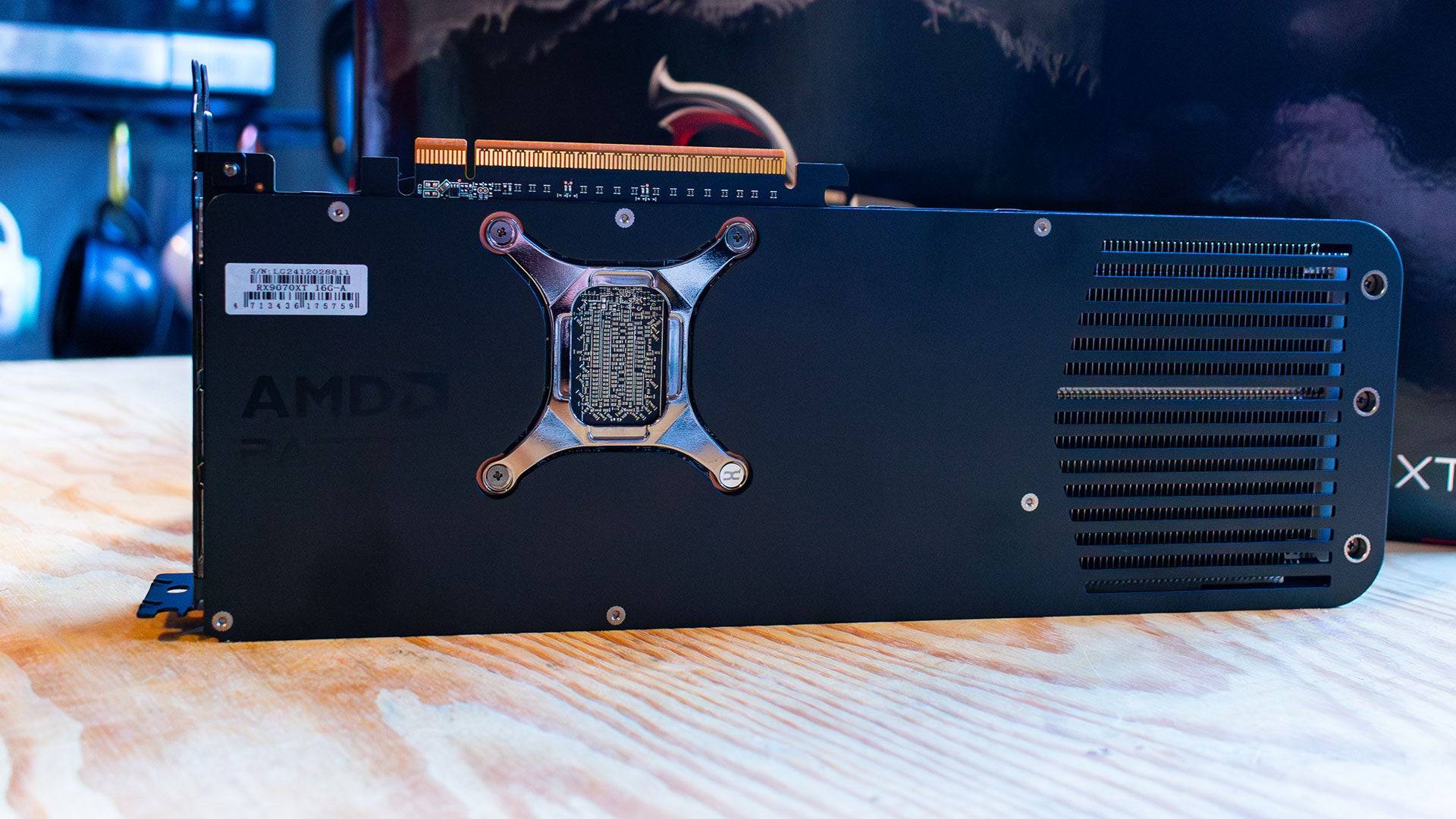
Specs and Features ------------------
The AMD Radeon RX 9070 XT is built on the RDNA 4 architecture, featuring significant enhancements in its shader cores, but the true highlights are the new RT and AI Accelerators. The AI Accelerators are crucial for FidelityFX Super Resolution 4 (FSR 4), marking the debut of AI upscaling on AMD graphics cards. While FSR 4 may not boost frame rates over the older FSR 3.1 model, it significantly improves image quality. For those prioritizing frame rates, the Adrenalin software offers an easy toggle to disable FSR 4.
Beyond AI upscaling, AMD has upgraded its shader cores, enhancing performance on a per-core basis. Despite having fewer Compute Units (64) than its predecessor, the Radeon RX 7900 XT (84), the RX 9070 XT achieves a notable generational performance increase at a more affordable price. Each Compute Unit contains 64 Streaming Multiprocessors (SMs), totaling 4,096, alongside 64 ray accelerators and 128 AI accelerators.
However, the RX 9070 XT has less memory than its predecessor, with 16GB of GDDR6 on a 256-bit bus, compared to the RX 7900 XT's 20GB on a 320-bit bus. This reduction in memory capacity and bandwidth is noticeable, but still sufficient for most 4K gaming needs. Ideally, AMD could have maintained the same memory configuration to avoid this downgrade.
Despite the new architecture's efficiency, the RX 9070 XT's power consumption is slightly higher at 304W, compared to the 7900 XT's 300W. Interestingly, my testing showed the 7900 XT consuming more power, peaking at 314W, while the 9070 XT maxed out at 306W.
Cooling the RX 9070 XT should not pose significant challenges, as it fits within the standard power budget for modern graphics cards. Notably, AMD has opted not to release a reference design for the RX 9070 XT, leaving third-party manufacturers to produce these GPUs. I tested the Powercolor Radeon RX 9070 XT Reaper, which features an efficient triple-fan design and maintained temperatures around 72°C during testing.
The RX 9070 XT uses standard power connectors, requiring two 8-pin PCI-E power connectors, making it a straightforward upgrade for most users with a recommended 700W power supply. It includes three DisplayPort 2.1a and one HDMI 2.1b port, as expected from a modern graphics card. However, the inclusion of a USB-C port would have added more versatility.

FSR 4 -----
For years, AMD has sought a competitive AI upscaling solution to rival Nvidia's DLSS. Previous versions of FidelityFX Super Resolution struggled with issues like ghosting and fuzziness. With the Radeon RX 9070 XT, AMD introduces FSR 4, powered by AI accelerators to analyze past frames and game engine data for more accurate upscaling. While FSR 4 improves image quality over FSR 3, it does come with a slight performance cost.
In Call of Duty: Black Ops 6 at 4K Extreme settings, the RX 9070 XT achieved 134 fps with FSR 3.1 in Performance mode, but this dropped to 121 fps with FSR 4, a 10% performance decrease, though with enhanced image quality. Similarly, in Monster Hunter Wilds at 4K with max settings and ray tracing, the RX 9070 XT managed 94 fps with FSR 3, but this fell to 78 fps with FSR 4, a 20% drop.
This performance hit is expected, as AI upscaling is inherently more demanding than temporal upscaling. AMD acknowledges this trade-off, emphasizing that the improved image quality should appeal to those prioritizing visual fidelity over frame rates, particularly in single-player games. Thankfully, FSR 3.1 remains available, and FSR 4 can be easily disabled in the Adrenalin software if needed.
AMD Radeon RX 9070 XT & 9070 – Benchmarks

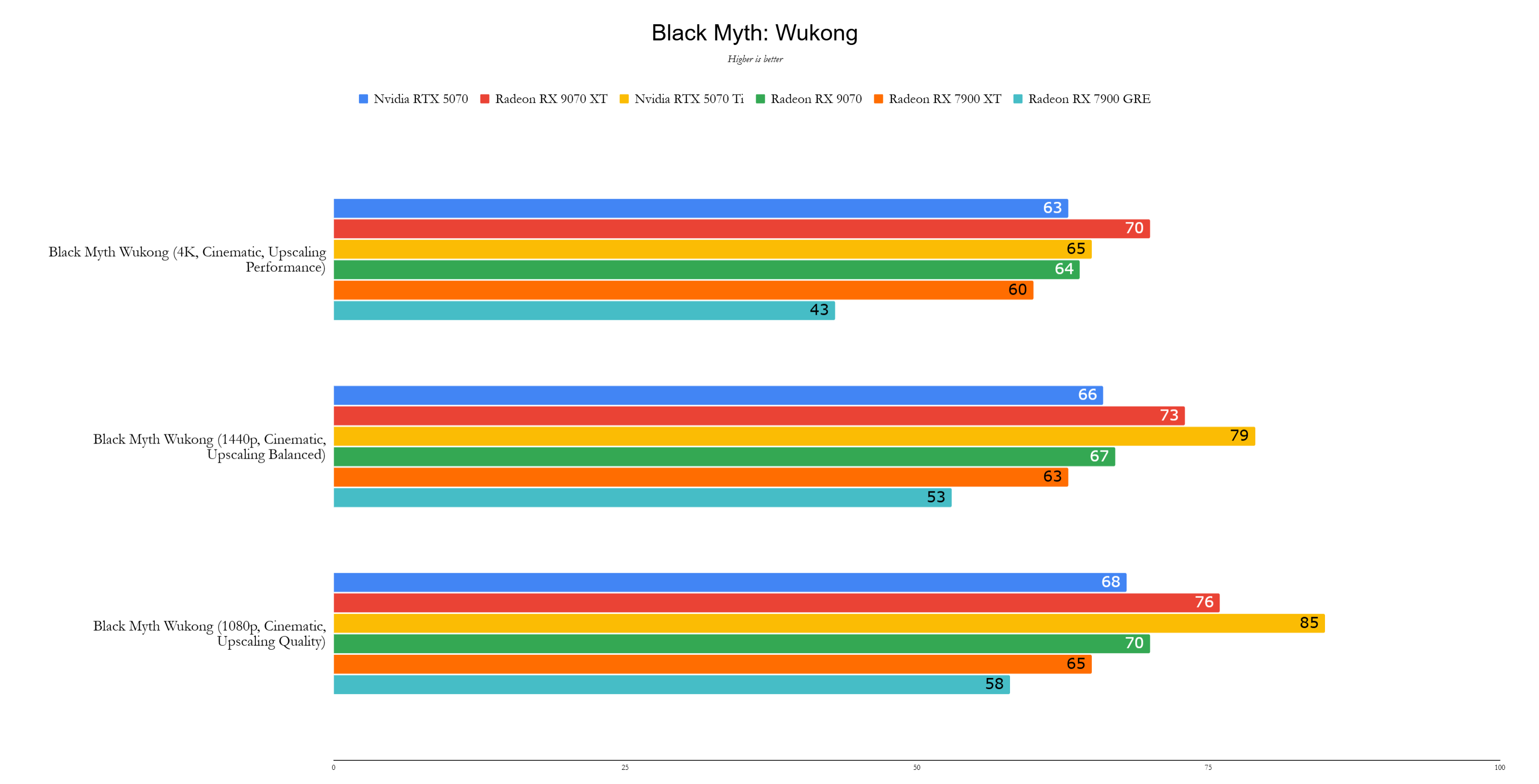 11 Images
11 Images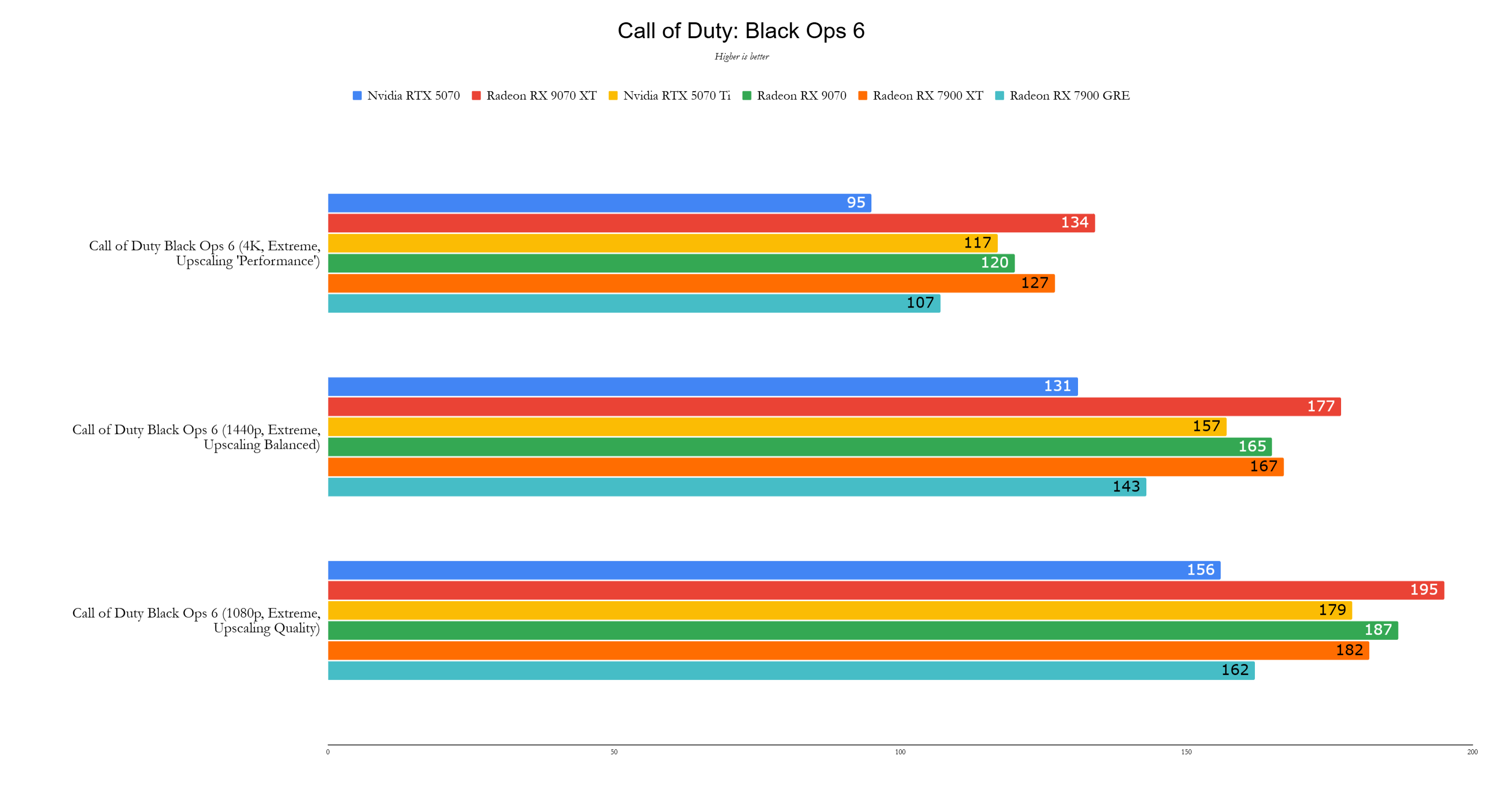
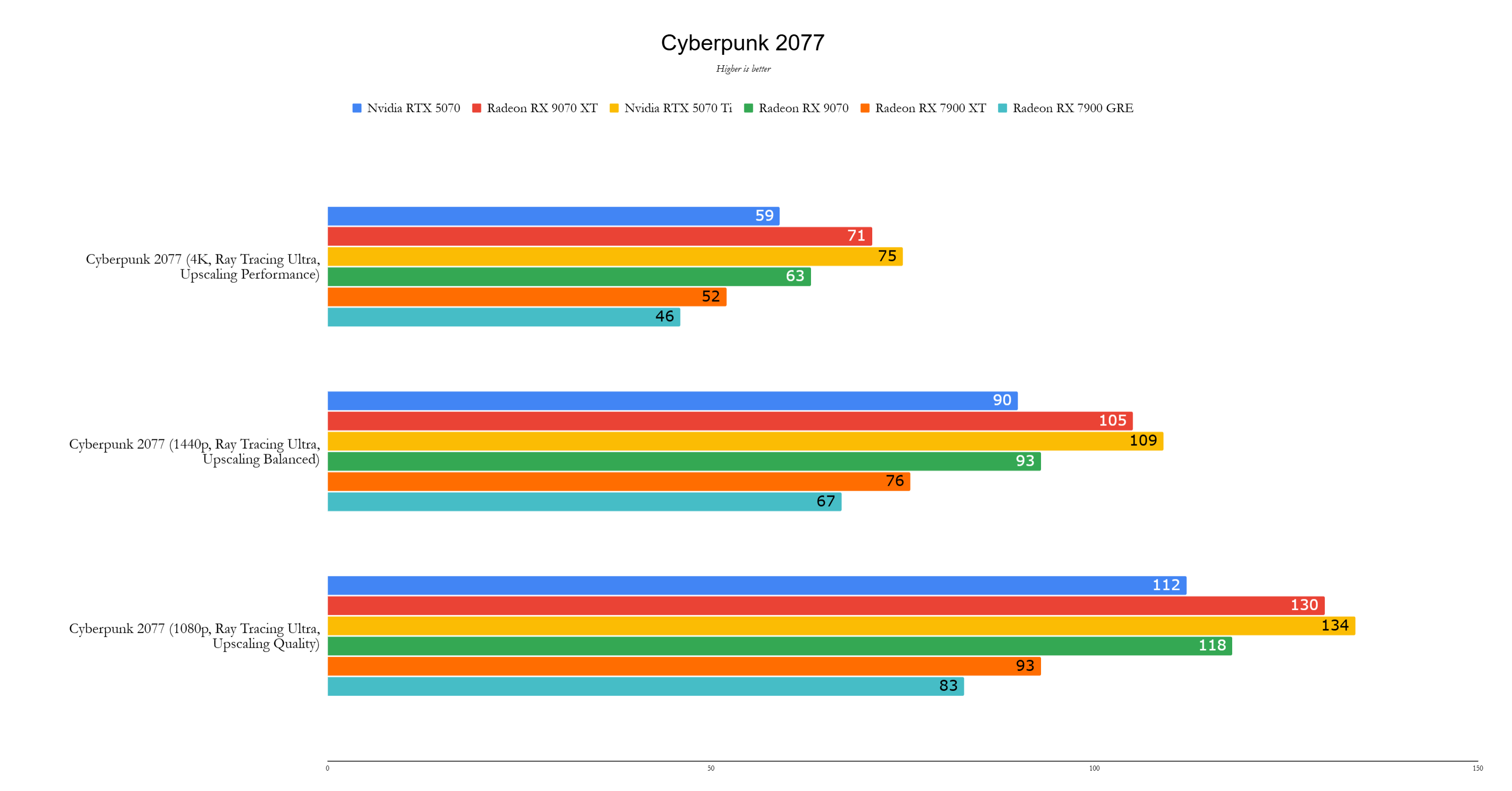

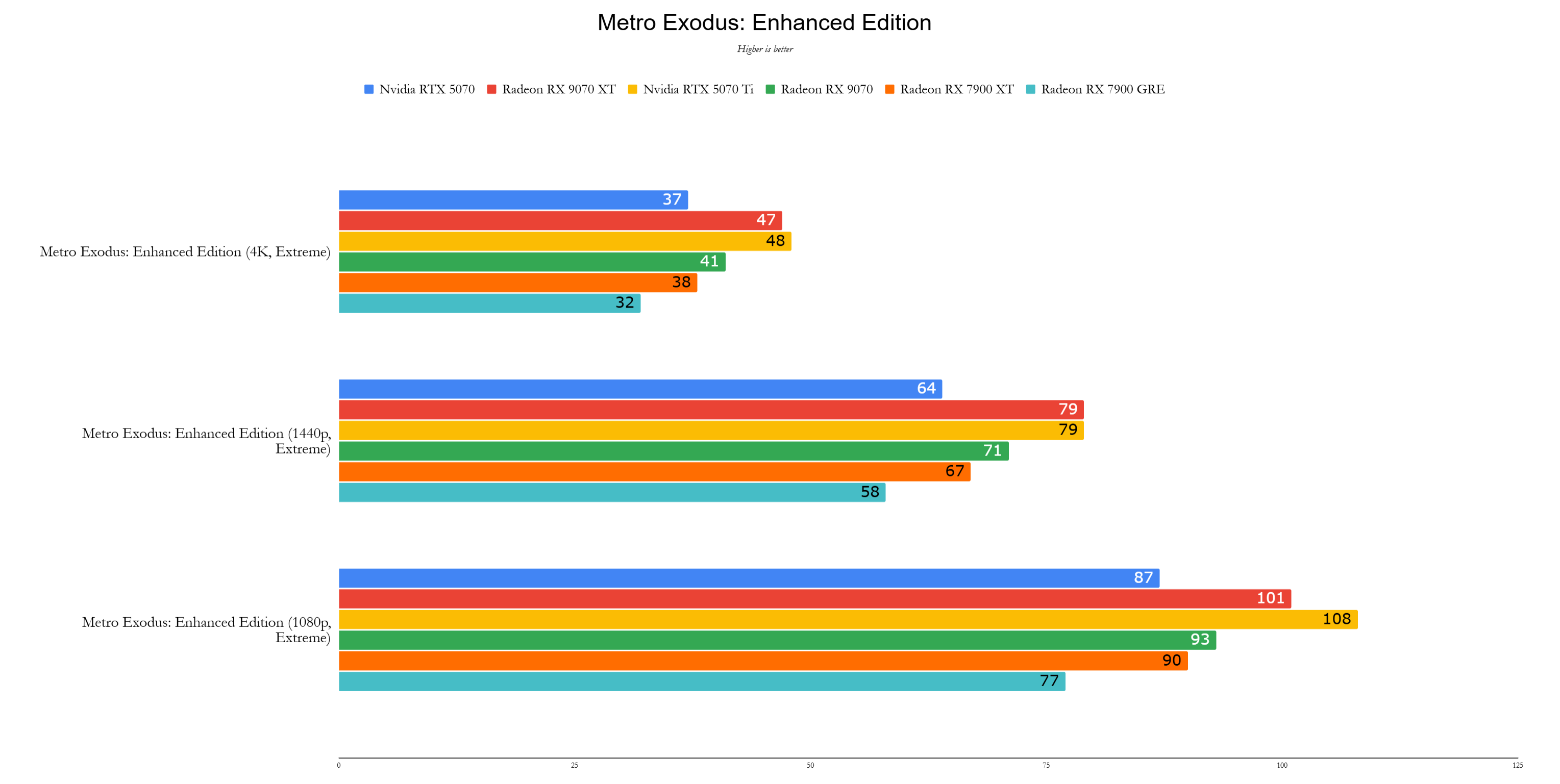
Performance -----------
AMD has delivered a strong contender with the Radeon RX 9070 XT. Priced at $599, it undercuts the Nvidia GeForce RTX 5070 Ti by 21% while being, on average, 2% faster. Although the RTX 5070 Ti outperforms the RX 9070 XT in some games, the close competition is a significant achievement for AMD.
Across my test suite, the RX 9070 XT was approximately 17% faster than the RX 7900 XT, which launched at $899 two years ago, and 2% faster than the new $749 RTX 5070 Ti. The RX 9070 XT excels at 4K, maintaining its lead even with ray tracing enabled, making it an excellent entry-level 4K graphics card.
All graphics cards were tested with the latest available drivers. Nvidia cards used Game Ready Driver 572.60, except for the RTX 5070, which was on review drivers. AMD cards were tested on Adrenalin 24.12.1, except for the RX 9070 XT and RX 9070, which used pre-release drivers provided by AMD.
While 3DMark isn't a playable game, it provides a useful comparison of graphics card potential. The RX 9070 XT outperformed the RX 7900 XT by 18% in Speed Way, though it lagged 18% behind the RTX 5070 Ti. In the Steel Nomad benchmark, the RX 9070 XT's performance increased to 26% over the RX 7900 XT and even surpassed the RTX 5070 Ti by 7%.
Test System CPU: AMD Ryzen 7 9800X3D Motherboard: Asus ROG Crosshair X870E Hero RAM: 32GB G.Skill Trident Z5 Neo @ 6,000MHz SSD: 4TB Samsung 990 Pro CPU Cooler: Asus ROG Ryujin III 360
In Call of Duty: Black Ops 6, the RX 9070 XT led the RTX 5070 Ti by 15%, though this game favors AMD hardware, with the RX 7900 XT only 6% behind the new card.
Cyberpunk 2077 traditionally performs better on Nvidia cards, but the RTX 5070 Ti's lead over the RX 9070 XT was only 5% at 4K with Ray Tracing Ultra and FSR 3 in performance mode, a significant improvement considering the price difference.
Metro Exodus, tested without upscaling at 4K, saw the RX 9070 XT achieve 47 fps, nearly matching the RTX 5070 Ti's 48 fps, while the RX 7900 XT lagged at 38 fps.
Red Dead Redemption 2 showcased the RX 9070 XT's Vulkan performance, achieving 125 fps at max settings, outpacing the RTX 5070 Ti's 110 fps and the RX 7900 XT's 106 fps.
The RX 9070 XT fell 13% behind the RTX 5070 Ti in Total War: Warhammer 3, with 76 fps compared to the RTX 5070 Ti's 87 fps and the RX 7900 XT's 71 fps.
In Assassin's Creed Mirage, the RX 9070 XT regained its footing, achieving 163 fps, outperforming the RTX 5070 Ti's 146 fps by 12% and the RX 7900 XT's 150 fps by 9%.
The RX 9070 XT's most surprising victory came in Black Myth Wukong, where it achieved 70 fps at 4K with the Cinematic Preset and FSR at 40%, compared to the RTX 5070 Ti's 65 fps, an 8% lead. This game features intense ray tracing effects, an area where AMD has historically struggled against Nvidia.
Forza Horizon 5 saw the RX 9070 XT achieve 158 fps, slightly ahead of the RTX 5070 Ti's 151 fps, demonstrating its competitive edge.
The Radeon RX 9070 XT's quiet announcement at CES 2025 felt like a strategic move by AMD to counter Nvidia's Blackwell graphics cards. At $599, it represents a return to more reasonable pricing in the graphics card market. While it may not match the RTX 5080 or RTX 5090 in raw performance, those cards are overkill for most users and cost significantly more.
The last great flagship graphics card was arguably the GTX 1080 Ti, launched at $699 in 2017. While the RX 9070 XT doesn't claim the title of the fastest consumer card, it feels like the first worthy flagship since then, offering exceptional value and performance for the majority of gamers.


